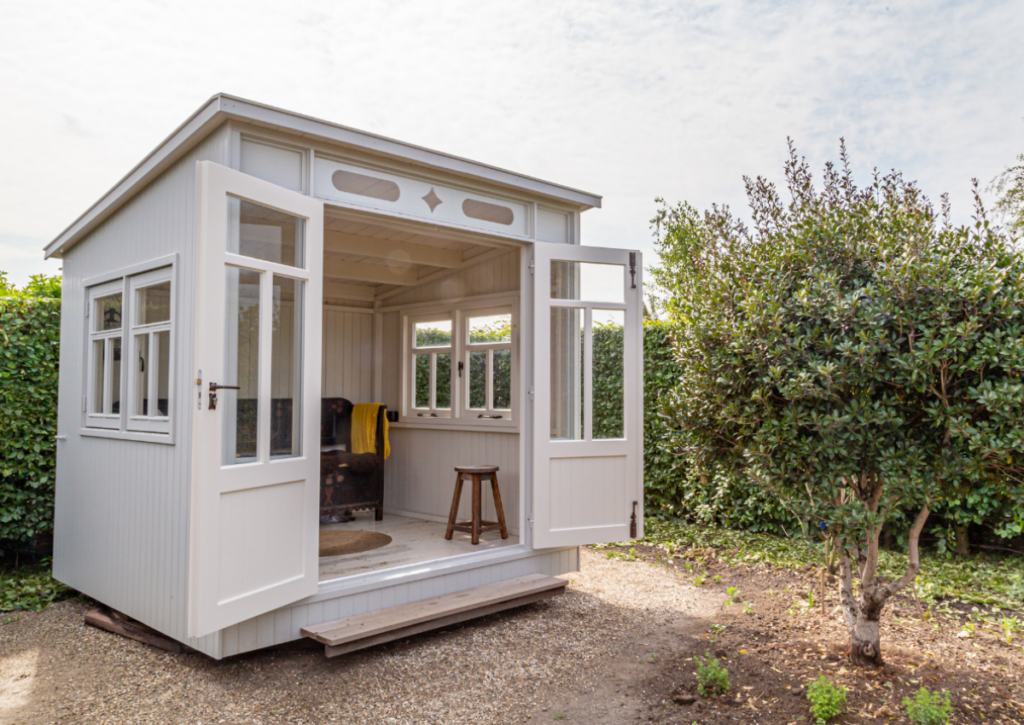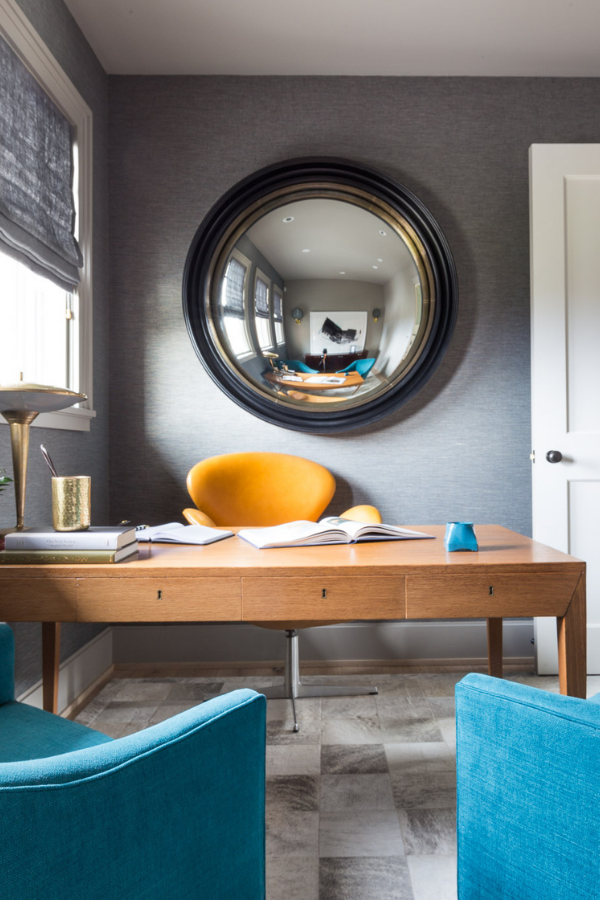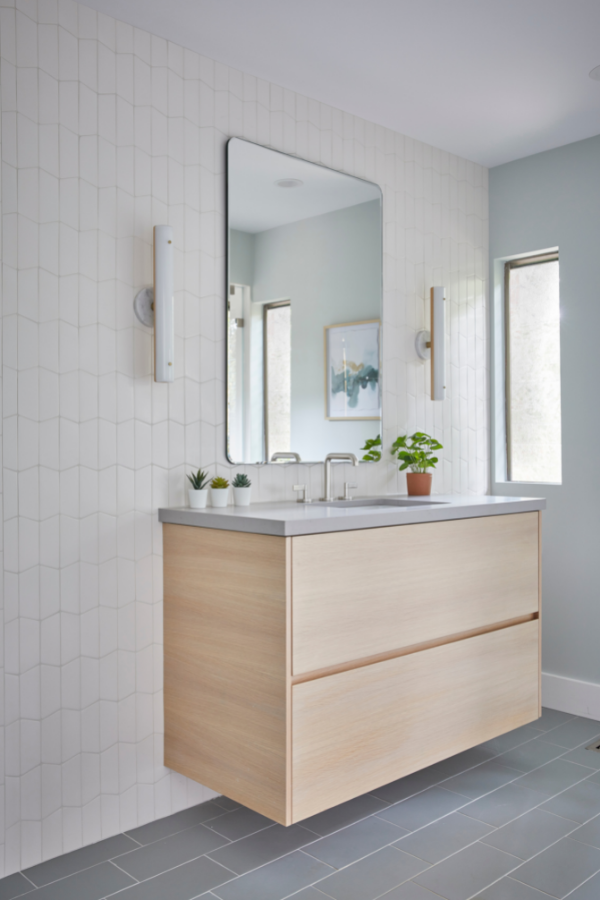Post-Covid Home Design Trends

Pre-Covid, we didn’t spend all our time at home. We spent most of our days at work, weekends at farmers’ markets, early mornings at the gym, and weeknights out to dinner with family or friends. Then came lockdowns, quarantines, social distancing, and well… you know the rest. (I think we’re all tired of it by this point.)
Though I’m a bit loath to revisit those memories, being “stuck” at home during quarantine days has changed the way we view our homes. It’s taught us some lessons and even impacted the amenities our clients ask for now. Which home features are moving backstage and which are becoming the priority?
Here are 7 changes we can take into home design in 2022…

From our Scandi Modern project. Photographed by Vivian Johnson.
1. Everyone needs a private space.
Having everyone at home all the time has meant that privacy is hard to find. I think we’ve all learned that everyone needs their own space to reset and relax. When tensions are high (or your child is tired of you trying to be their teacher), you don’t really want to be stuck in the same space. You need a space that feels like a retreat, such as a soothing bedroom, cozy reading nook, meditation or exercise room, or even a She Shed.

2. Sometimes open concept spaces aren’t the right answer.
For the last decade or more, open-concept spaces have been all the rage. After the past couple years, I think many of us are realizing their limitations. Open concept spaces can be too much “togetherness” when everyone is home all the time.
Open floor plans can also be very loud and can become cluttered quickly. For example, if your child or partner has the TV on in the living room and you’re trying to work at the kitchen island…not a productive work environment. Or maybe you have dishes from dinner out, all the toys in the living room, and a table full of homework. On their own? No problem. Seeing those messes all together? Chaos.
Separate spaces are the solution, whether that means adding them in or deciding not to tear down the walls that are, as you now realize, preserving your sanity. 😉

From our San Francisco Style Project. Photographer: David Duncan Livingston.
3. Offices or supportive workstations are non-negotiables.
Raise your hand if you set up your home office at the dining room table, kitchen island, or in a corner of your bedroom? Terms like cloffice (closet office) or lauffice (laundry room office) became popular during quarantine, and it’s not surprising. Most floor plans are not set up to WFH…but cramped, dark spaces aren’t doing much for productivity either!
Working from home is still standard for many of us, so having an actual place to focus and work comfortably is non-negotiable for many families. We suggest optimizing your workspace by adding a standing desk or placing your desk in front of a window. You can find more home office design tips here.

From our Beach House project. Photographer: David Duncan Livingston.
4. Flexible spaces are a must.
If there’s a space in your home that doesn’t get a lot of use, I have two suggestions: 1) repurpose it into a space that will be functional for your family, and 2) why not make it a “flex” space, for many occasions?
For example, you may only use your formal dining room during the holidays, so why not turn it into a home office, a homework station, or a lounge that soothes away the stress of the day? Or all 3?
A guest room is another flexible space you can turn into a home office. Don’t let it sit there wasting space for three-fourths of the year. Open up the space to more functions—especially ones that excite you—and watch your joy with your home grow.
5. Functional design pays long-term returns.
We’ve talked about rooms that serve you, but within those rooms, we’re seeing clients desperate for better functionality, as well. Do you have a cabinet you have to MacGyver every time you open it, or a finicky appliance? I bet you’ve never been more in tune with your home’s flaws than in the last couple years!
Having a fully functioning home is vital for feeling supported at home and recharged for whatever lies outside the front door. Which is probably why we’re seeing kitchen and bathroom renovations in especially high demand. People are tired of living with dated, dysfunctional spaces. And there’s a solution.

From our Scandi Modern project. Photographed by Vivian Johnson.
6. Comfort is top priority.
Comfort is vital to happiness at home, especially when you’re spending more time there than before. Instead of homes that feel precious, we’re seeing clients becoming more eager to invest in high-quality, enduring pieces that will bring them long-term comfort and happiness.
On the flipside, those daily irritants that seem super small? Chipped paint. The rug you always trip over. That heinous bathroom paint color that you can barely make eye contact with. These little things add up to emotional discomfort over time, even if you don’t realize it.
Often, clients will tell us how light and free they feel in their new homes, and I think this is why—those things you don’t love about your home are heavy. Once they’re gone and replaced by colors, textures, and pieces you love, the difference is palpable. Comfort is physical and emotional.

From our San Francisco Style Project. Photographer: David Duncan Livingston.
7. Location is slightly more flexible.
If your current home isn’t working for you and you just need more space, it’s okay to look for a new home that will suit all your needs. Working from home now allows us more flexibility in our locations, since the distance to and from work isn’t the huge factor it once was. (Plus, now your kid might be able to get into that school district you’ve been eyeing.)
If you’re considering a move in the near future, we fully support you. Check out our Designer’s Guide to Moving into a New Home and make sure it has everything you’ve been missing.
We hope that your home has achieved all of the above in the last couple years, but if you’re not there yet, that’s okay. These aren’t trends—they’re shifts in how we use our homes, and they’re not going away any time soon. Start now, and you’ll be living in a supportive, joyful, and comfortable home before you know it. Need help? You know where to find us.
Cheers,
Melanie